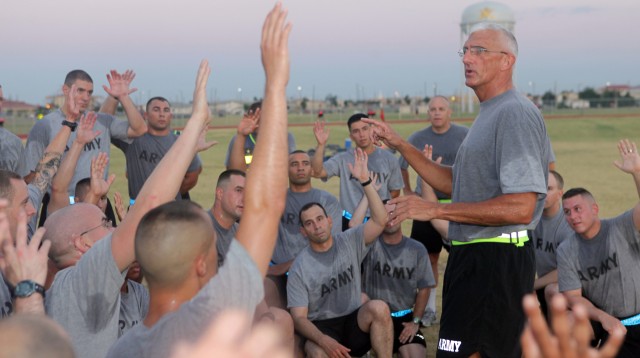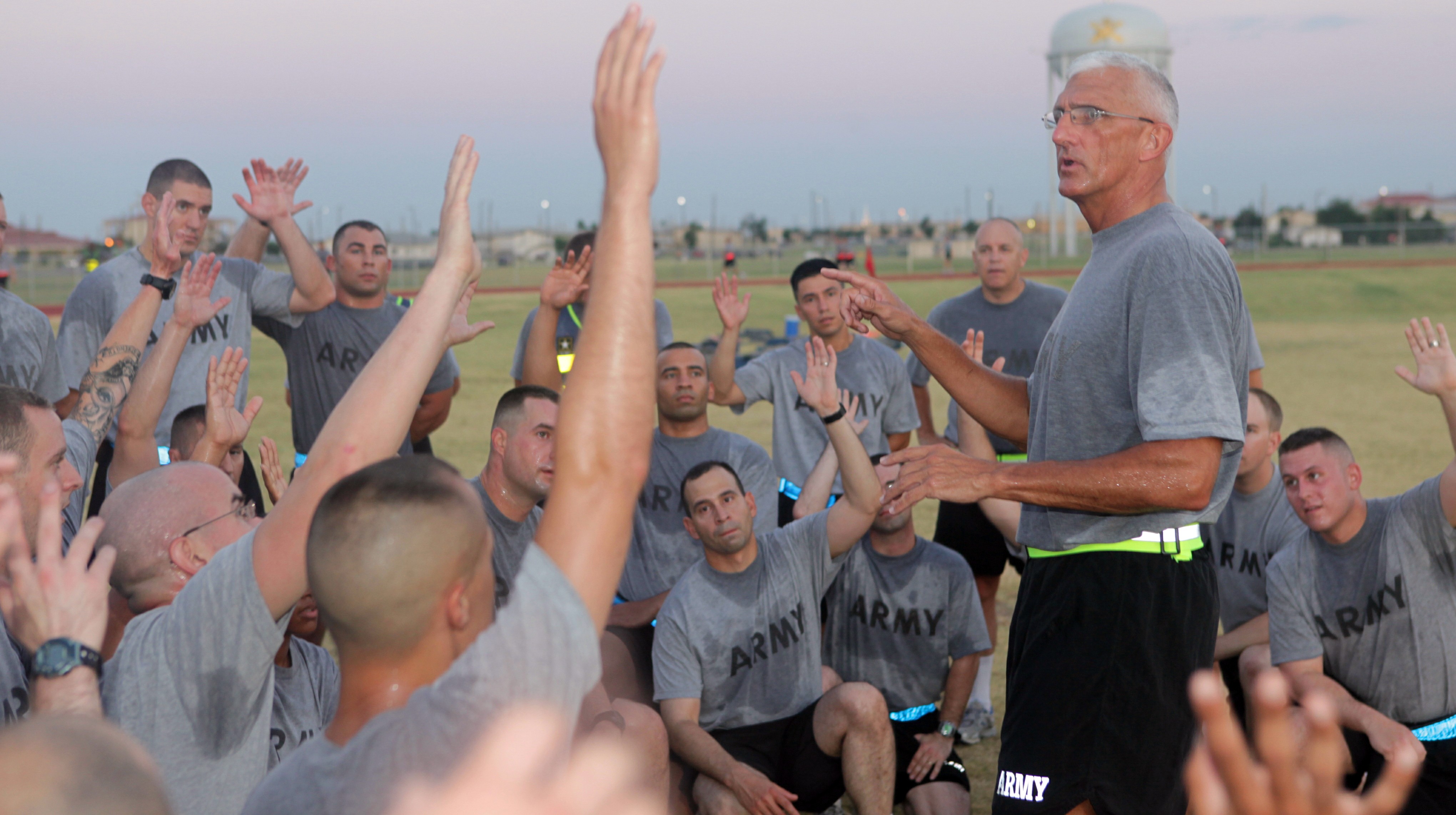
FORT SILL, Okla. -- Army Basic Combat Training has recently been made more challenging, and it is smarter in what it teaches, according to the deputy commanding general of initial military training at U.S. Army Training and Doctrine Command.
"Every piece of basic combat training was analyzed and adjusted to meet the demands of the current fight," said Lt. Gen. Mark Hertling, who is based at Fort Monroe, Va., at TRADOC. "That's the first time that we've done that in many years."
Hertling visited Fort Sill, Aug. 10-13, to meet with its leaders, instructors and students and to observe training. He took time to answer questions about the recent changes in enlisted and officer initial entry training.
One of the changes to BCT is the increased training hours in rifle marksmanship and a new advanced rifle marksmanship course, which mirrors the kinds of action a Soldier will see in combat, Hertling said.
And, the combatives program, or hand-to-hand fighting, now teaches Soldiers how to fight an armed enemy, an unarmed enemy and using one's rifle like a pugil stick.
Taking lessons learned from the battlefield, first aid training has also changed with more emphasis on tactical battle care, he said.
The physical training program was revamped as part of a larger program which looks at Soldiers as athletes. It has three components: physical training, injury prevention and fueling the Soldier, or the nutrition aspect, he said.
Hertling will soon meet with Lt. Gen. Benjamin Freakley, commanding general of the U.S. Army Accessions Command, which is responsible for recruiting people to become Soldiers.
"He's got some ideas on the how recruiters can help us better prepare Soldiers before they even get to basic training," Hertling said.
This spring, the Basic Officer Leader Course Phase II and BOLC III were consolidated to create BOLC B. The new course trains second lieutenants from the same functional areas, such as field artillery, unlike the old course which had officers from different branches mixed together. The 18.5 week-BOLC B is more efficient in producing officers and cost effective, Hertling said.
Hertling spent time with lieutenants in BOLC B here and discussed what they were garnering from the course.
"They seem to be pretty pleased with what they're experiencing," Hertling said. "Just the fact that they are with either their field artillery or air defense artillery brothers and sisters here in a common scenario is a good thing."
Hertling also addressed Soldiers who come to work at a TRADOC unit after a deployment, such as drill sergeants, advanced individual training platoon sergeants and BOLC small group instructors.
They are critically important to the Army not only because they train Soldiers, but because they are the future leaders of the Army, he said. These Soldiers are not coming to a unit where they can take a knee down and get a drink of water.
TRADOC cadre are being challenged and stressed, but their Army families seem to understand that and they are significantly supporting their Soldiers.
"You talk to anybody training our Soldiers and they'll tell you that it's a hard job," Hertling said.
Still, working at TRADOC after a deployment provides instructors the opportunity to improve their basic skills, such as leadership, fundamental counseling, and technical and common skills, he said.
"When they leave the training base and go back out to the operational force, they are much better leaders and trainers," he said.

Social Sharing